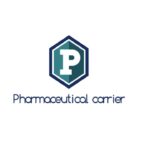1. Purpose of Developing and Optimizing Chromatographic Methods
The purpose of this Standard Operating Procedure (SOP) is to establish guidelines for the development and optimization of chromatographic methods at [Company Name]. This procedure ensures the accurate and reliable analysis of samples in the laboratory.
2. Scope of Developing and Optimizing Chromatographic Methods
This SOP applies to all laboratory personnel responsible for developing and optimizing chromatographic methods within the [Company Name] laboratory. It covers the entire process, from method selection to optimization.
3. Definitions
3.1 Chromatographic Method:
A set of conditions and parameters used to separate, identify, and quantify analytes in a sample.
4. Responsibilities
4.1. Laboratory Manager
4.1.1 Ensure that method development and optimization adhere to this SOP.
4.1.2 Allocate resources and oversee the laboratory’s compliance.
4.2. Analysts
4.2.1 Follow this SOP for method development and optimization.
4.2.2 Report any deviations or issues to the Laboratory Manager.
5. Method Development
5.1. Preliminary Assessment
5.1.1 Define the purpose of the analysis, including analyte identification and quantification.
5.1.2 Select the appropriate chromatographic technique (e.g., HPLC, GC) based on sample and analyte characteristics.
5.2. Column and Stationary Phase Selection
5.2.1 Choose the chromatographic column and stationary phase that best suits the separation needs.
5.2.2 Ensure compatibility with the analyte and sample matrix.
5.3. Mobile Phase Selection
5.3.1 Determine the optimal mobile phase composition based on analyte polarity, sample matrix, and method goals.
6. Method Optimization
6.1. Parameter Adjustment
6.1.1 Optimize chromatographic parameters, such as flow rate, column temperature, injection volume, and detector settings.
6.2. Gradient Profile
6.2.1 Develop and fine-tune gradient elution profiles to achieve the desired separation.
6.2.2 Monitor and adjust the gradient for reproducible results.
7. Method Validation
7.1. Analytical Performance
7.1.1 Evaluate method performance through validation studies, including linearity, accuracy, precision, and robustness.
7.1.2 Verify method suitability for intended use.
7.2. Documentation
7.2.1 Maintain comprehensive records of method development and optimization.
8. Record Keeping
8.1. Records
8.1.1 Keep detailed records of method development, optimization, validation, and performance data.
8.2. Schedule
8.2.1 Establish a schedule for regular method review and updates as needed.
8.2.2 Ensure compliance with the schedule.
For more articles, Kindly Click here.
For pharmaceutical jobs, follow us on LinkedIn
For Editable SOPs in word format contact us on info@pharmaceuticalcarrier.com
For more information kindly follow us on pharmaguidelines.co.uk
Pharmacareer team is a team of Experts from every department of Pharmaceutical industry having enriched experience. Experts have work experience of many multinational pharmaceutical industries worldwide.


